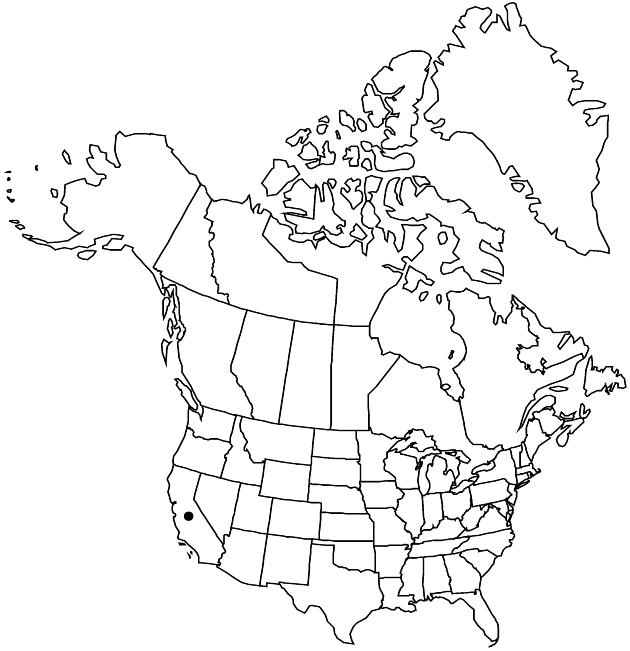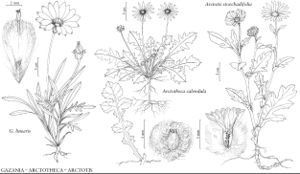Arctotheca calendula
J. S. African Bot. 8: 284. 1942.
Plants usually stoloniferous. Leaves obovate, (2–)5–20(–30+) × (1–)2–5(–7) cm, margins pinnati-sect (lyrate to runcinate), remotely prickly, abaxial faces white-pannose, adaxial faces sparsely puberulent to arachnose, usually glandular as well. Heads 4–7 cm diam. (across the rays). Phyllaries: outer reflexed, apices mucronate, white-woolly; inner appressed, margins hyaline, apices rounded, glabrous. Ray florets 11–17(–25); corolla laminae abaxially greenish to purplish, adaxially yellow (drying to basally ochroleucous, apically blue, forming bull’s eye around disc), 10–25 × 2–4 mm, sparsely puberulent, glandular. Disc florets: corollas yellow proximally, bluish distally. Cypselae dark brown, 3 mm, densely woolly; pappi ca. 0.5 mm (usually hidden by hairs on cypselae).
Phenology: Flowering Oct–Aug.
Habitat: Roadsides, old fields, other disturbed habitats
Elevation: 0–300 m
Distribution

Introduced; Calif., Africa.
Discussion
Most populations of Arctotheca calendula are sterile and spread aggressively by stolons; at least three populations in the flora are fertile and highly invasive. The species is listed by the California Exotic Pest Plant Council (CalEPPC) as a weed with the potential to spread explosively (Red Alert, CDFA A).
Selected References
None.
